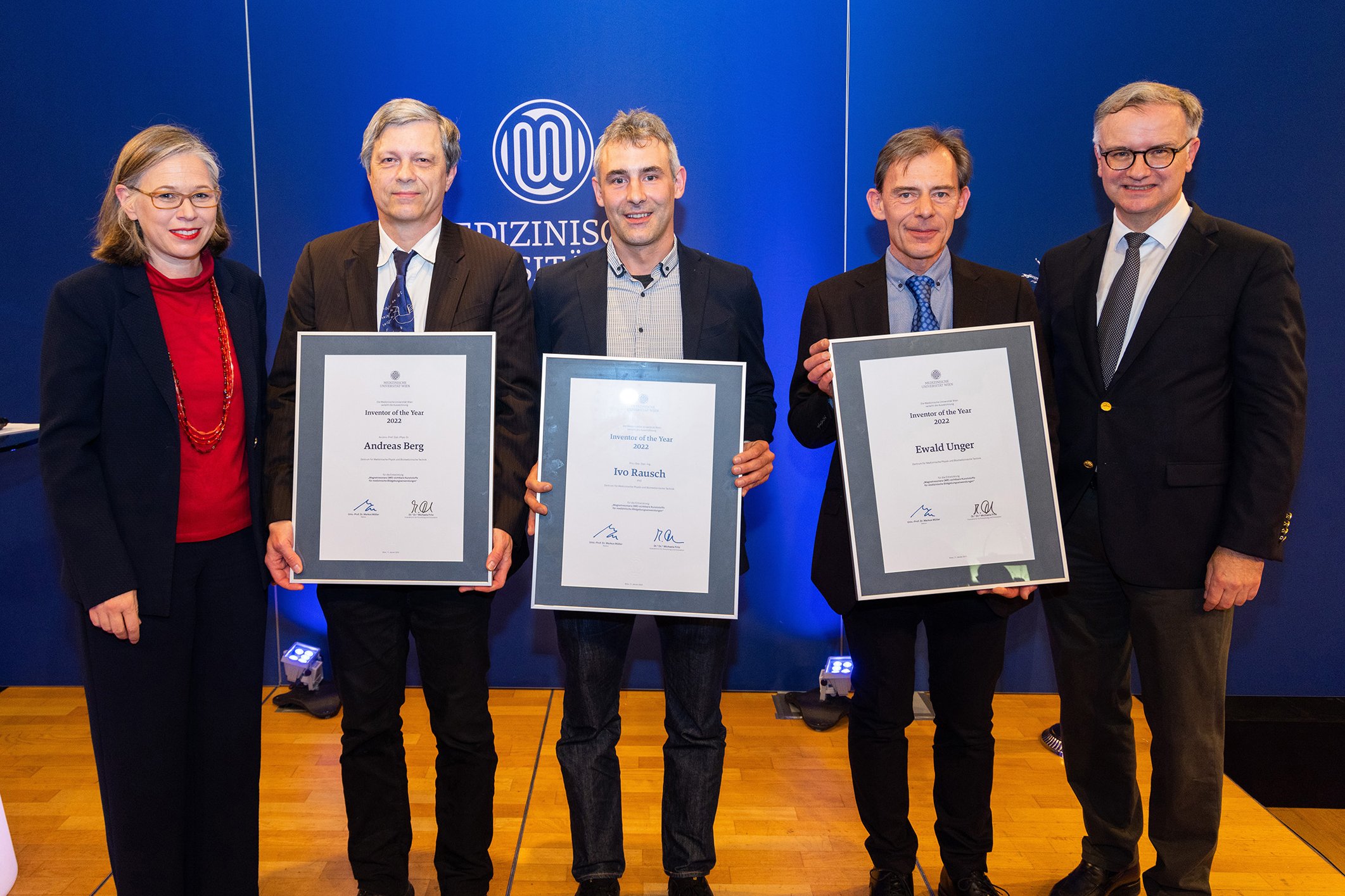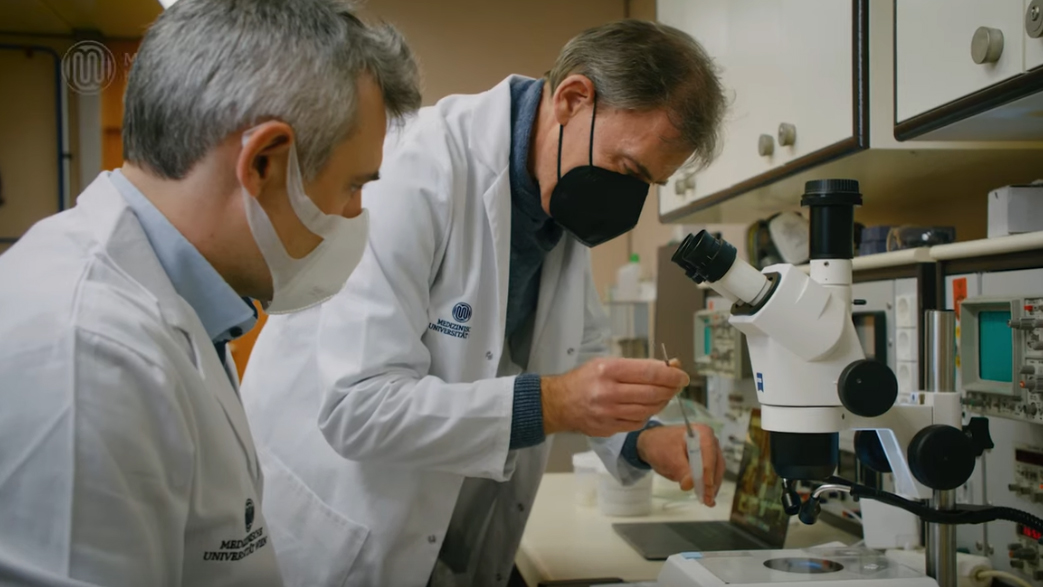
(Vienna, 19 January 2023) MedUni Vienna awarded Ivo Rausch, Ewald Unger, Alejandra Valladares and Andreas Berg of the Centre for Medical Physics and Biomedical Technology of MedUni Vienna as Inventors of the Year 2022. The research team led by Ivo Rausch as Principal Investigator was honoured for the development of plastics for medical imaging visible in magnetic resonance (MR).
Standard plastics are commonly used in clinical routine and research for quality control, fixation devices and implants. However, they cannot be rendered visual by standard MR imaging methods due to their very rapid MR signal drop associated with mechanical stiffness.
This inability to visualise solid plastics poses a challenge for a variety of applications in clinical routine and research. Examples include quality control of modern hybrid imaging systems in cancer diagnostics (PET/MRI) or MR-based radiotherapy planning. Here, separate CT images of the plastic components currently have to be taken in order to be able to consider their influence, e.g. on the quantification of the PET data or the dose distribution during radiotherapy. Therefore, the development of new materials visible in MRI is of great advantage.
In the context of this project, Rausch and his colleagues developed a novel light-curable plastic composition with add-ons that is capable of generating an MR imaging signal in standard MRI procedures. In particular, the material can be used for 3D printing applications, such as the production of MR phantoms and MR-visible devices to position the patient in MR-guided radiotherapy. The technology uses micro-particles that absorb a proton-rich liquid as an MR-visible additive and hold it in a spatially relatively homogeneously distributed mixture with polymer resins. Depending on the mixing ratio and the type of liquid, different signal intensities and relaxation times can be generated.

After activation, data will be sent to YouTube. Further information here: Data protection